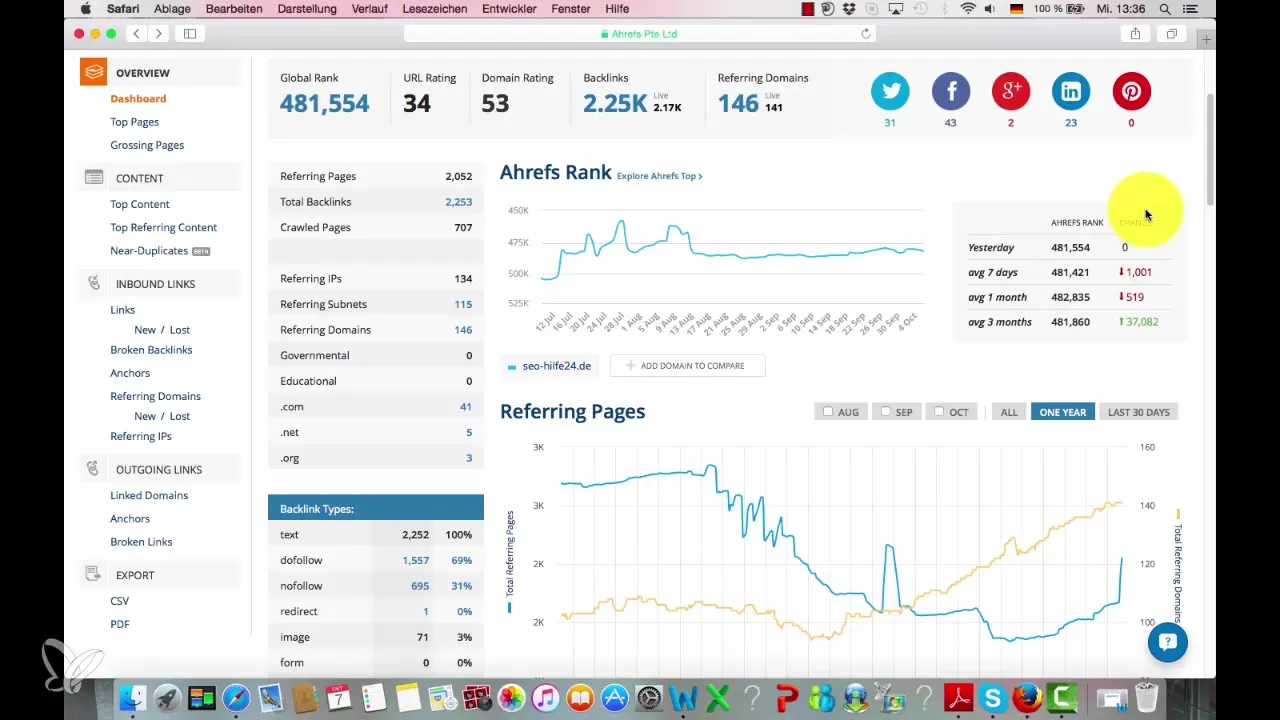Before you start with link building, it is essential to assess the current state of your backlinks. The quantity and quality of the links pointing to your website have a significant impact on your ranking in search engines. In this guide, I will show you how to effectively determine the current state of your backlinks and which metrics are important.
Key Insights
- The current state of your backlinks significantly affects your search engine ranking.
- You should analyze the number of existing backlinks as well as the referring domains.
- Tools like Ahrefs are useful for a comprehensive analysis of your backlinks.
- Document your analyses to keep track of progress in your link-building strategy.
Step-by-Step Guide
Step 1: Assessing the Current State
Before taking measures to improve your backlinks, you first need to determine your current state. This means you must find out how many backlinks you currently have and from which domains they come. It is not unusual for you to already have links, even if your site is new.
Common mandatory directories like phone books lead to you getting some backlinks right from the start. Even if you register with official registries or chambers, you often get links. So, don't be surprised if you already have a certain amount of backlinks.
Step 2: Using a Tool to Analyze Your Backlinks
To obtain informed information about your backlinks, you should use a suitable tool. I recommend using Ahrefs. The setup is easy and there's a free version for getting started. Sign up and go through the registration process.
Once you are logged in, you can enter your domain and retrieve a variety of relevant information. The application's dashboard will show you many important metrics that will help you with your analysis.
Step 3: Analyzing the Detailed Data
After entering your domain, you will see various metrics that will help you better understand the current state of your backlinks. First, pay attention to the "Global Rank," which shows the traffic of your website compared to others. A value below 500,000 is user-friendly; anything over 1 million requires attention.

Another valuable parameter is the "URL Rating." The higher this value, the better. A URL Rating above 25 is a good sign for smaller businesses. However, for larger brands, the value may be significantly higher due to overall competition intensity.
Step 4: Evaluating the Backlinks and Their Sources
Now, you should examine the actual number of your backlinks as well as the number of referring domains. For example: If you have 2,253 backlinks, but they only come from 146 domains, that means that on average, each domain has sent about 20 links to you.
Make sure that both the number of backlinks and the number of referring domains should grow. The trend of these numbers is crucial for your future SEO efforts.
Step 5: Considering Social Signals
Supplement your analysis with social signals. Platforms like Twitter and LinkedIn can help you gain additional reach. Do not underestimate the importance of such connections, even if some platforms may seem less significant.
Document the number of social signals you receive, as they also have an impact on your search engine ranking.
Step 6: Documenting Progress
It is important to document all collected data. Take screenshots or create an Excel spreadsheet to track changes and developments in your backlinks and social signals over time.

With this documentation, you will be better able to track your progress in implementing link-building strategies and make adjustments.
Summary - Analyzing the Current State of Your Backlinks
In this guide, you have learned how to assess and analyze the current state of your backlinks. The key steps include assessing the backlinks, using tools like Ahrefs for analysis, evaluating the sources, incorporating social signals, and documenting your progress. With this information, you can strategically work on improving your link-building strategy.
Frequently Asked Questions
How do I analyze my backlinks?Use tools like Ahrefs for a comprehensive analysis of the backlinks and their sources.
What is a good URL rating?A URL rating above 25 is considered very good, especially for smaller businesses.
What should I pay attention to regarding referring domains?Ensure they are diversified and ideally that the number is increasing.
Are social signals important for SEO?Yes, they can help increase your visibility, even if some platforms have less significance.
How do I document my backlink analysis?Take screenshots or maintain an Excel spreadsheet to track developments and changes.


